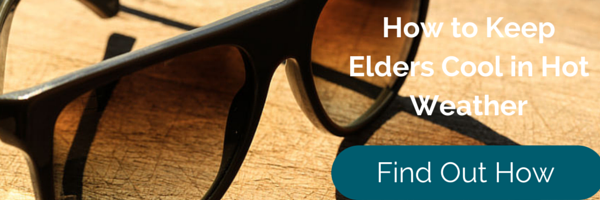
It’s never too late to start living a more active senior life.
It’s a flat-out falsehood that older adults cannot or should not be engaging in regular exercise. In fact, research has shown that regular physical activity promotes independent senior living by helping you look and feel younger even as the calendar years roll past.
Exercise is a help, not a hindrance, to senior wellness. Regular activity lowers your risk for a number of conditions that are typically associated with older age—Alzheimer’s and dementia, heart disease, diabetes, and even certain types of cancer.
If you’ve been thinking about starting a senior fitness program, don’t wait. Summer can be a great time to start getting more active.
Start your summer senior fitness program today.
1. Take a walk through the neighborhood every evening.
Walking doesn’t require any special equipment, and it isn’t particularly strenuous. Put on a comfortable pair of walking shoes and head outside to soak up the summertime beauty.
2. Join a senior sports team or exercise class.
Being part of a team or fitness program with other older adults has many benefits. In addition to helping you stay active and healthy in your senior living, a group activity allows you to connect with your peers and build healthy and supportive relationships that promote emotional and mental wellness.
3. Dive into water aerobics or other water exercises.
Water aerobics put less of a strain on your body than land-based activities do thanks to the natural buoyancy of water. It’s safe for seniors of all abilities, carrying a lower risk of injury and pain normally associated with other forms of exercise.
Because water is buoyant and has higher resistance than air, water aerobics is a great way to improve your balance and strengthen and tone muscles. Water exercises help you lose weight, reduce your stress, and prevent other chronic conditions while removing many of the risks associated with land-based activities. Plus it’s a great way to stay cool in the summer.
4. Take your yoga mat outside.
In addition to promoting more active senior living, yoga targets some of the most invasive side effects of aging like loss of balance and strength. Yoga breathing can also help increase lung capacity and even the simplest poses can improve your posture, reduce stress, and help you get a better night’s sleep.
A class setting with professional instruction can help you learn poses safely and correctly, so check to see if you local studio or local senior center or offers yoga for older adults.
Practice summer safety in your senior fitness.
Be very careful of how much time you spend sweating to the oldies out-of-doors. While exercise can keep you younger, extended periods of exposure to high temperature or direct sun can be dangerous.
As we mention in our earlier blog on summer safety for seniors, half of the American population will develop at least one of the two most common forms of skin cancer by the time they turn 65, and over exposure to UV rays is responsible for almost all of the visible changes in skin elasticity that are commonly attributed to natural aging. Protect your health and your skin by practicing sun safety.
- Limit the time you spend exercising out-of-doors—especially during the sun’s peak hours of intensity from ten in the morning to four in the afternoon. If you’re an outdoor walker, try getting your daily walk in early in the morning before things start to heat up or waiting until the early evening when temperatures begin dropping as the sun sets.
- When exercising outside, always wear a sweat-proof broad-spectrum sunscreen of at least 15 SPF. Apply early to allow the sunscreen to soak in for a deeper level of protection (the earlier you apply, the deeper the sunscreen can penetrate and protect) then reapply every two hours.
You should always speak to your healthcare provider before beginning a senior fitness routine, especially if you are starting out from a sedentary lifestyle or suffer from chronic conditions like diabetes or high blood pressure.












